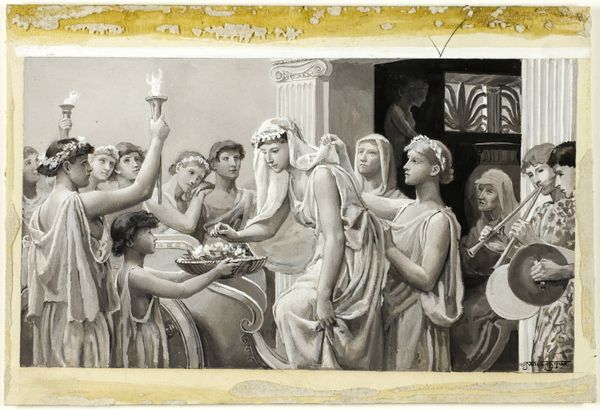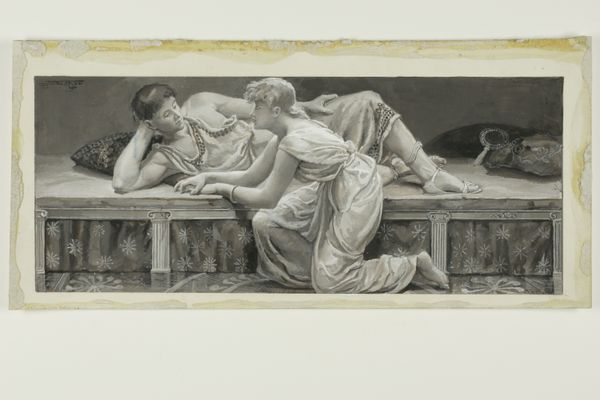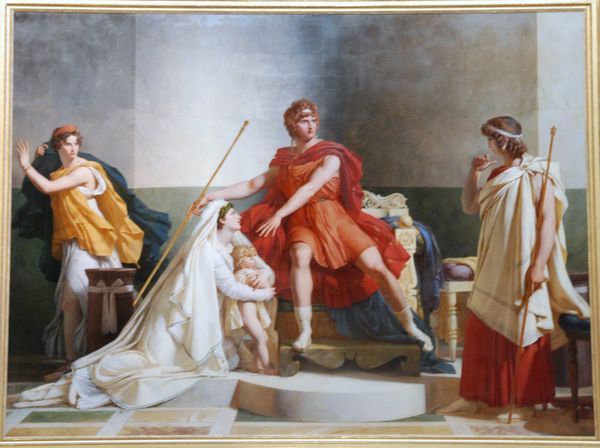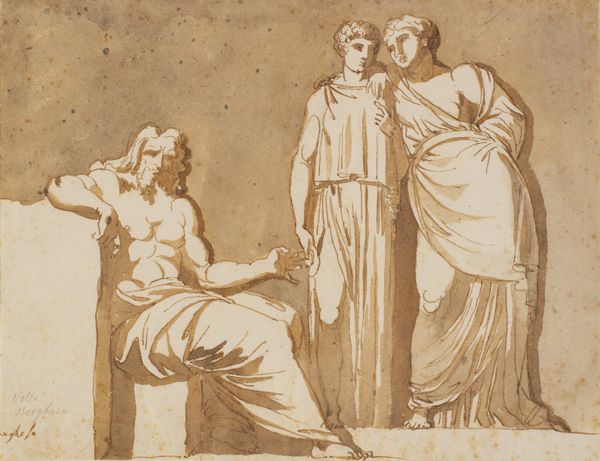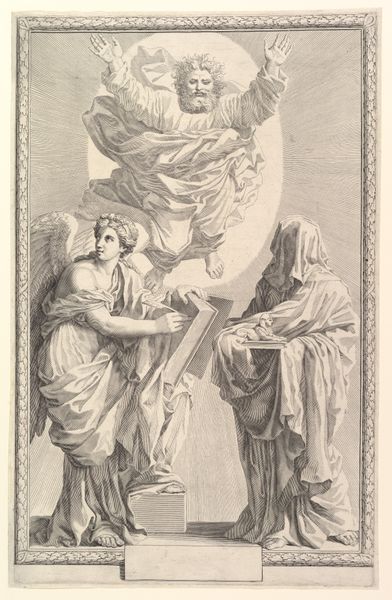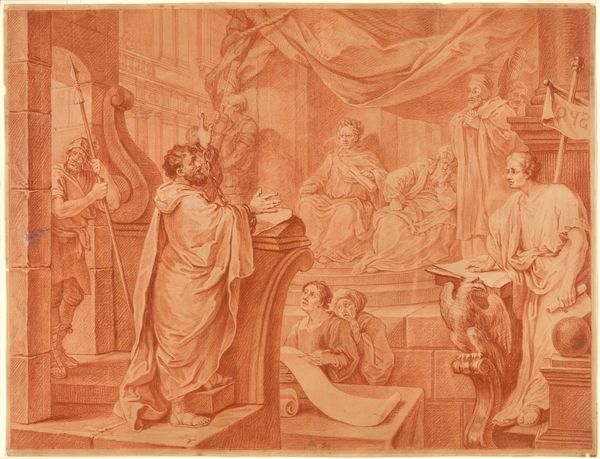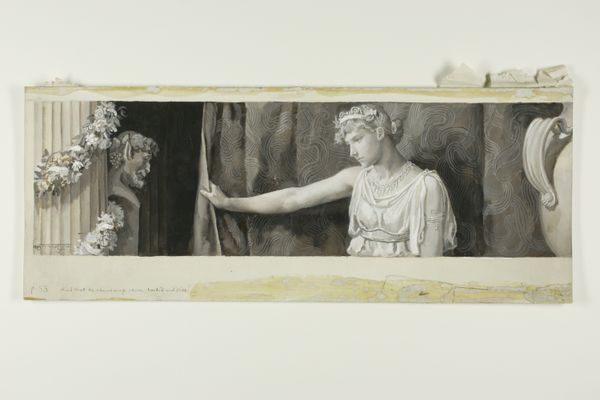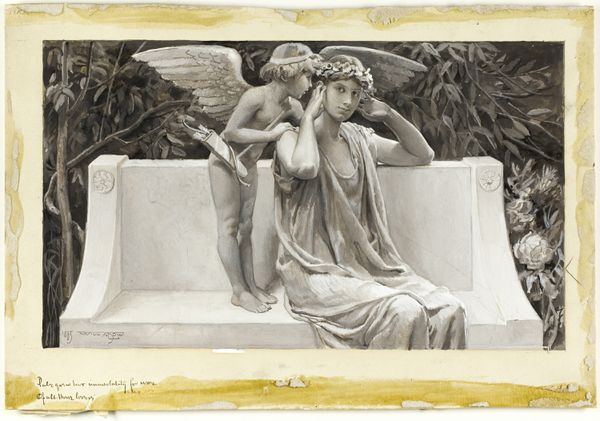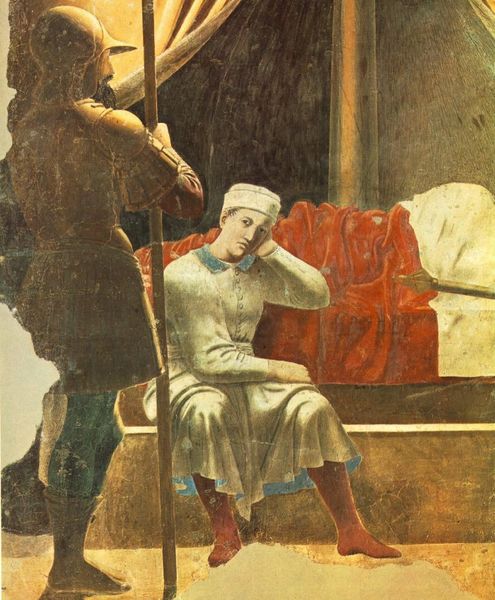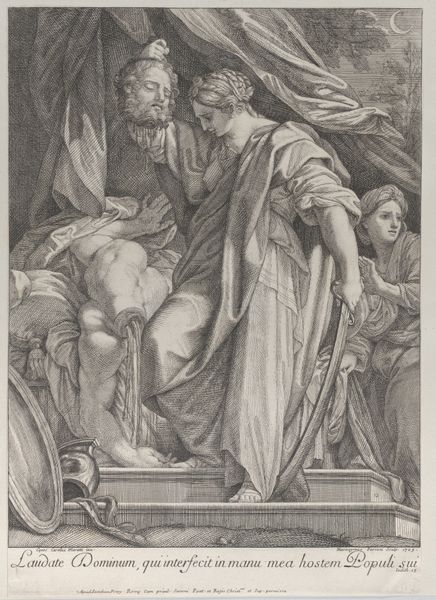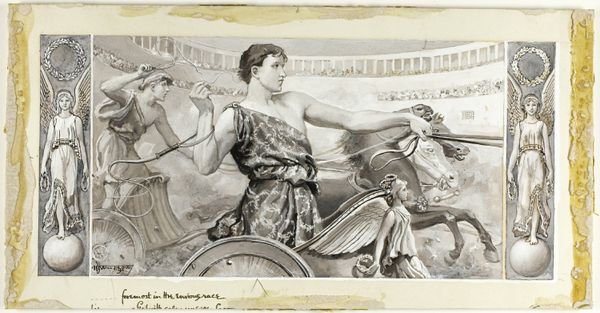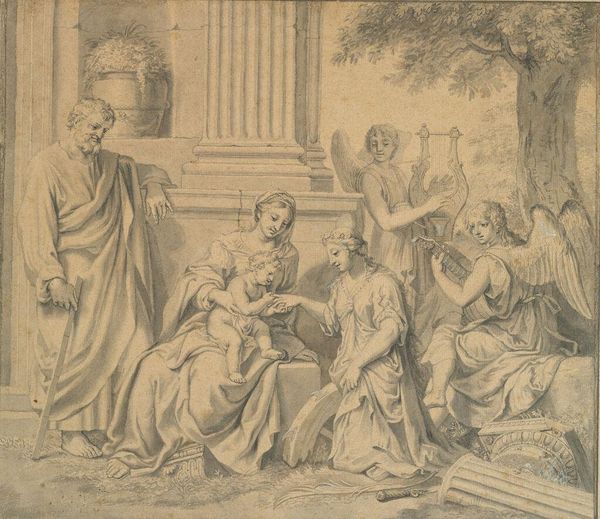
Checking His Love Trance, a Cup He Took Full Brimm'd 1885
0:00
0:00
Dimensions: 268 × 348 mm
Copyright: Public Domain
Curator: Here we have Will Hicock Low’s "Checking His Love Trance, a Cup He Took Full Brimm'd," dating back to 1885. It's a drawing primarily using gouache, watercolor, and charcoal on paper, now held at the Art Institute of Chicago. The muted tones give it such a melancholic air, don’t you think? Editor: Absolutely. There's a real sense of quiet desperation emanating from the figures; they appear caught between indulgence and apprehension. It speaks to larger issues of societal roles and the pressures surrounding idealized love during the late 19th century. Curator: Focusing on materials, the layered applications of watercolor and gouache create a remarkable depth, juxtaposing transparent washes with more opaque areas, achieving textures almost sculptural. It makes me think of how industrialization allowed easier access to art supplies. Were these more commercially available than earlier pigments or dyes? Editor: A very astute observation. Cheaper and more accessible pigments definitely democratized art making. In the context of the Gilded Age, where conspicuous consumption was rampant, consider the gendered dimensions of art-making: who had access to leisure, materials, and training? These seemingly classical figures echo earlier representations but are also complicit in reflecting contemporary social anxieties. Curator: Indeed. Notice the rendering of fabric and flesh. Low really exploits the properties of charcoal and gouache to suggest texture and form. There’s a palpable interest in realism even within the idealized, romantic context. How does the setting itself feed this discussion? Editor: The quasi-classical setting with its suggestive ornamentation and incense contributes to a carefully crafted environment meant to signify luxury and a retreat from the harsh realities faced by much of the populace at the time. Their privileged isolation only serves to amplify the underlying unease. Do they truly love each other, or is this a performance for societal consumption? Curator: Looking again at the materiality, I think about the physical act of creation – the artist blending the paint, carefully applying it, the marks of the charcoal... It all speaks to the artist’s own labor and skill. Editor: And thinking about contemporary consumption patterns, that act of "checking his love trance" highlights a consumerist approach to relationships, mirroring the transactional ethos pervasive then. Are these figures consumers of art, consumers of love, or both? It compels us to critically analyze art, romance, and societal expectation in that period. Curator: It’s quite powerful how Low uses these seemingly delicate mediums to engage with complex questions. I will see it in another way now. Editor: Precisely. The layers of art history, social critique, and medium specificity yield endless reinterpretations. A good moment of considering representation in art, wouldn't you say?
Comments
No comments
Be the first to comment and join the conversation on the ultimate creative platform.

